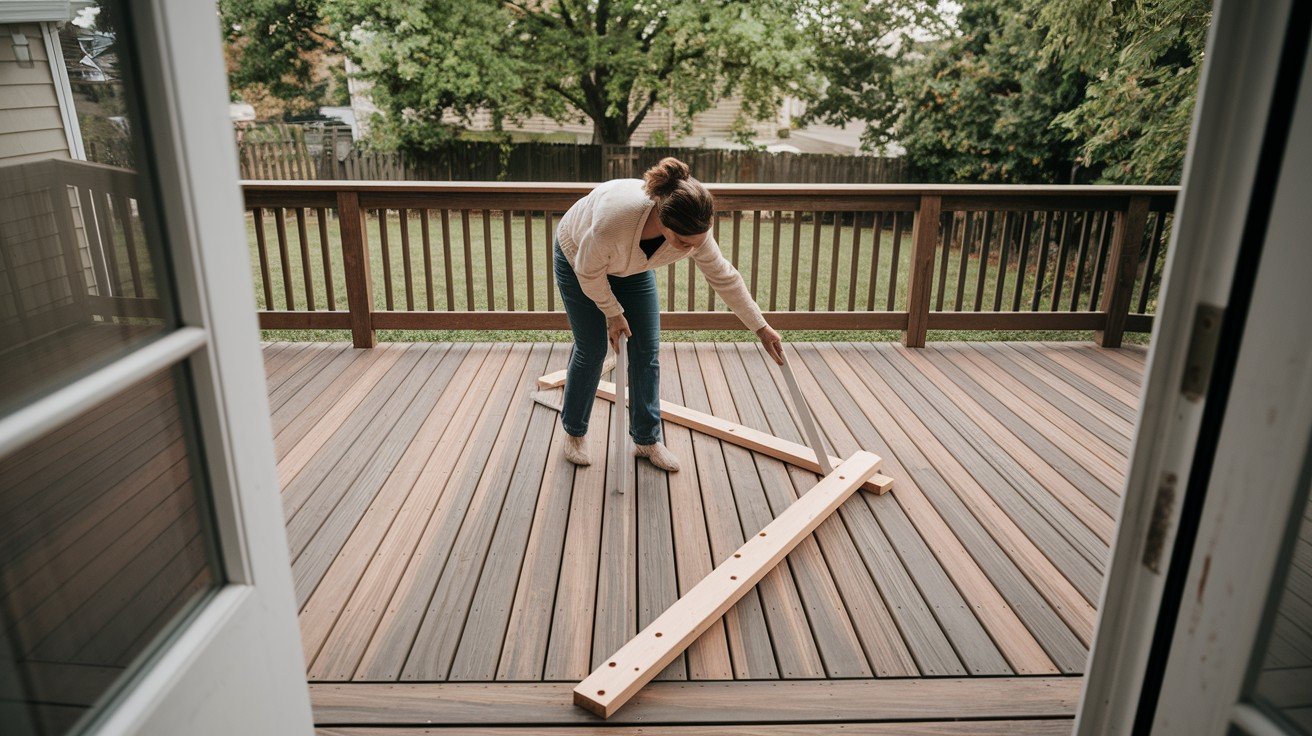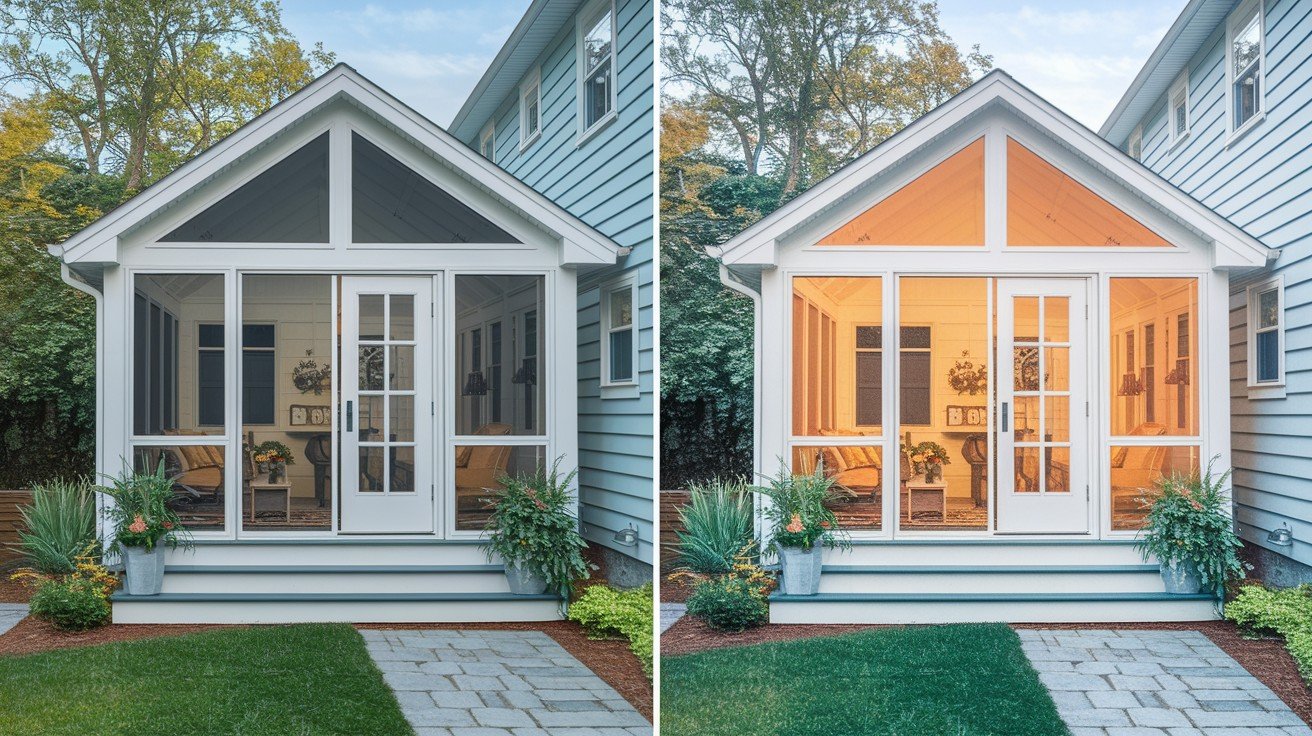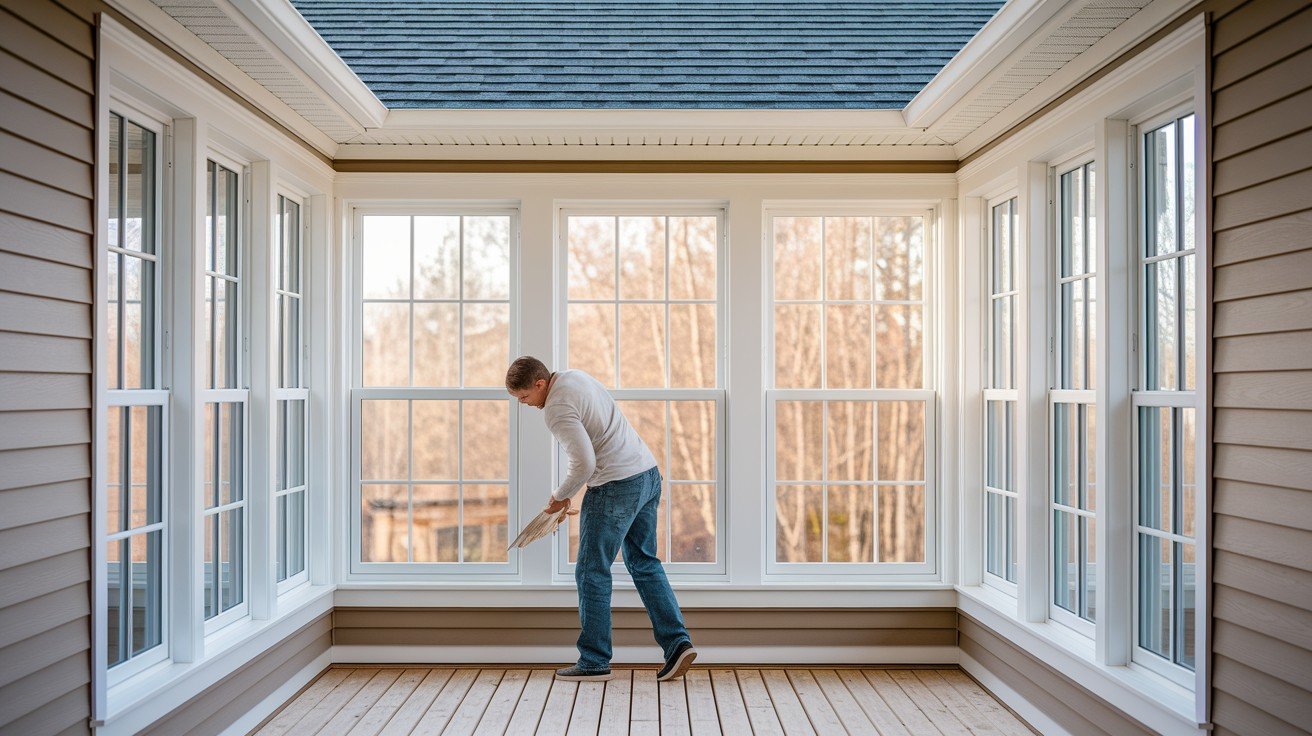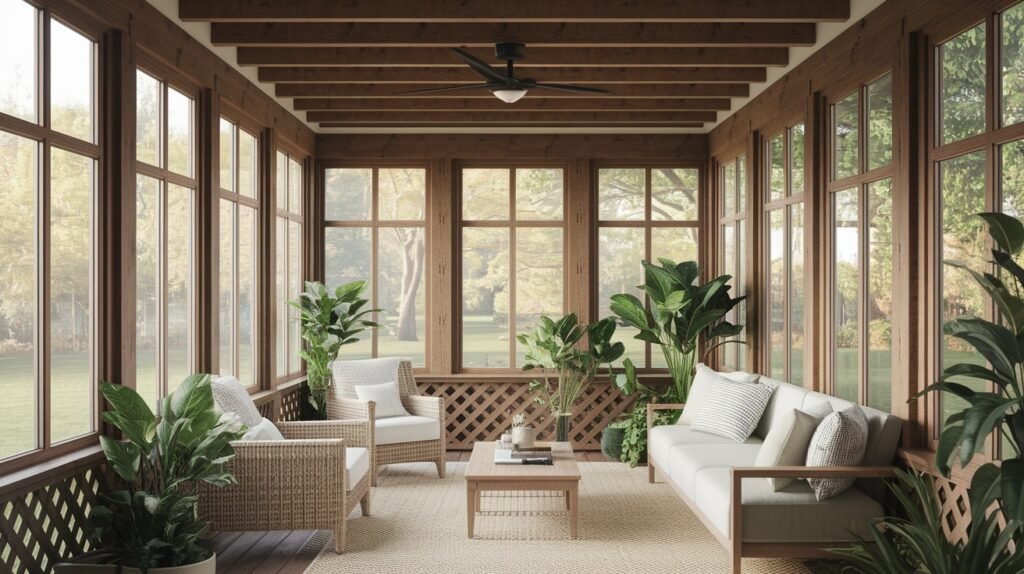Looking at your deck and dreaming of a sunroom? You’re not alone. Many homeowners want that perfect indoor-outdoor space, but worry about the costs.
The good news? Converting your existing deck doesn’t have to drain your savings account.
I’ve helped dozens of families turn their decks into beautiful sunrooms while staying within budget. Through years of experience, I’ve learned which decisions save money and which ones cost extra.
In this guide, you’ll get 7 proven strategies to cut conversion costs. You’ll see real budget breakdowns from actual projects. I’ll share smart material choices that save thousands. Plus, you’ll learn contractor selection tips to avoid overruns.
If your goal is a simple three-season room or a fully insulated four-season space, these tips work. I’ll show you exactly how to maximize your investment while creating the sunroom you’ve always wanted.
Ready to make your deck conversion dreams affordable? Let’s start saving you money.
Top 7 Tips to Convert a Deck to a Sunroom
Here are 7 ideas that you’re sure to love. Let’s get started:
1. Evaluate Your Existing Deck Structure to Avoid Costly Surprises

Your deck might look solid from the surface. But looks can be deceiving. I’ve seen homeowners skip this step and pay thousands extra later.
Start with the foundation. Concrete foundations can usually support a sunroom without major reinforcement. Block foundations often need expensive upgrades. Walk around and check for soft spots, dark stains, or loose, wobbly wood. Deteriorating wood kills budgets – replacing rotten beams adds $5,000 to $15,000.
Check if your deck is level using a long board and a level. Uneven decking means costly corrections. Get a professional evaluation early. It costs a few hundred dollars but prevents budget disasters.
Size matters for your wallet. Building within your existing footprint saves $15,000 to $40,000 compared to new construction. But bigger decks need more materials, which means higher costs.
Distance from your home matters too. Further decks create complex roofing and higher labor costs. Sometimes using just part of your deck makes more financial sense.
2. Choose Budget-Smart Sunroom Types

Not all sunrooms are created equal. Your choice here can save or cost you thousands.
I always start by asking clients one simple question: “How often will you use this space in winter?” Your honest answer determines everything.
Three-season rooms cost 30-40% less than four-season alternatives. That’s huge savings right off the bat. No insulation needed. No HVAC requirements. You still get year-round wind protection and pest control, which is what most people want.
Here’s the truth: most families use their sunrooms mainly in spring, summer, and fall anyway. Three-season rooms offer the best ROI for moderate climates.
But maybe you’re different. Maybe you’ll truly use that space every single winter day. Then, a four-season room makes financial sense. Higher upfront cost, yes. But it adds more home value, too. Just factor in those ongoing energy costs versus the actual benefits you’ll get.
3. Make Strategic Window and Material Choices

Windows eat up 40-60% of your sunroom budget. Choose wisely here.
Skip those fancy sunroom kit windows. Standard double-pane windows offer better value and last longer. I’ve seen too many kit windows fail within five years.
Bigger windows cost less per square foot than multiple small ones. Fewer frames, less labor, lower costs. Fiberglass windows cost more upfront but reduce long-term maintenance headaches.
Don’t fall for expensive specialty glass unless your climate demands it. Regular double-paned windows work fine for most areas.
For materials, extend your existing home siding and roofing. This creates a seamless look while reducing costs. Choose durable materials that minimize future repairs. Avoid premium finishes that don’t add proportional value to your investment.
4. Plan Smart Energy Features That Pay Back

Some energy upgrades pay for themselves. Others just drain your wallet.
Low-E window coatings cost a little extra but deliver significant energy savings. Small upfront cost, big long-term payoff. Proper insulation prevents costly future retrofits. Seal all gaps during construction because fixing air leaks later costs three times more.
For HVAC, extend your existing system when possible. New mini-splits sound cool, but cost $3,000 to $8,000 extra. Size your heating and cooling appropriately. Oversized equipment wastes money and energy.
Zone controls help with energy efficiency if you’re building a larger space. But don’t overcomplicate things if you’re keeping it simple.
5. Understand Real Costs and Budget Strategically

Let’s talk real numbers. No sugar-coating here.
Base conversion costs run $55,000 to $90,000 for a standard 14’x16′ space. Building over your existing deck? Expect $73,000 to $99,000. New construction with deck removal jumps to $98,000 to $133,000. Large additions with premium features hit $132,000 to $180,000.
Here’s how to control those costs. Stick to standard sizes because custom materials cost 20-30% more. Time your project during contractors’ slower seasons for better rates. Bundle with other home improvements for potential discounts.
Winter and early spring often offer the best contractor rates. Plan and save.
6. Select the Right Contractor to Avoid Budget Overruns

Bad contractors destroy budgets. I’ve seen it happen too many times.
Choose design-build contractors when possible. Single point of contact reduces miscommunication and costly change orders. Integrated design and construction prevent expensive revisions later.
Get detailed written estimates with specific material specifications. Verify licensing and insurance to avoid liability costs. Check references specifically for budget adherence, not just pretty pictures.
Require fixed-price contracts with clear change order procedures. Protect yourself upfront or pay dearly later.
7. Optimize Timing and Permits for Maximum Savings

Timing can save you thousands.
Schedule during off-peak seasons when contractors compete for work. Allow adequate time for permits because rush fees add 15-25% to permit costs. Plan material deliveries to minimize storage costs.
Make sure your contractor handles all permits. You don’t want delays and fines eating into your budget. Understand local code requirements that affect costs upfront.
Factor inspection schedules into your project timeline. Smart planning prevents expensive delays.
Conclusion
Converting your deck into a sunroom doesn’t have to cost a fortune. These 7 tips can save you $15,000 to $40,000 on your project while still creating the space you want.
Start by evaluating your existing deck structure. Choose the right sunroom type for your budget. Make smart material decisions. Plan energy features that pay for themselves. Understand real costs upfront. Select experienced contractors. Time your project strategically.
Remember the key principle: invest in structural elements and energy efficiency, but be selective with premium finishes. A well-planned sunroom adds $40,000 to $60,000 in home value while giving you year-round enjoyment.
Your deck conversion dreams are within reach. Take the first step by getting quotes from qualified design-build contractors. Your future sunroom is waiting.
Frequently Asked Questions
Can I convert any deck into a sunroom?
Not all decks work. Foundation strength, level surface, and structural integrity determine feasibility. Professional evaluation prevents costly mistakes.
What’s the cheapest sunroom option?
Three-season rooms cost 30-40% less than four-season versions. No insulation or HVAC needed, reducing overall project expenses significantly.
How much does a deck-to-sunroom conversion typically cost?
Expect $55,000-$90,000 for a standard 14’x16′ conversion. Building over an existing deck costs less than a complete reconstruction project.
Do I need permits for deck conversion?
Yes, most locations require building permits. Professional contractors handle permits, ensuring code compliance and avoiding potential legal issues.
How long does conversion take?
Typical projects take 4-8 weeks, depending on complexity. Weather, permits, and material availability affect the timeline and costs.

